Apple MacBook Pro (2024) Review: M2 Pro and M2 Max Flex
Table of Contents
The 2024 MacBook Pro: A Powerhouse Redefined
Apple’s 2021 redesign of the MacBook Pro marked a significant evolution for the series, introducing Apple Silicon, an array of ports, a 1080p webcam, and a thicker profile to accommodate these features. This was a daring shift, showcasing a departure from some of Apple’s previous design philosophies. Now, the latest 14-inch and 16-inch MacBook Pros build on this strong foundation, upgrading to the M2 Pro and M2 Max chips for enhanced performance and battery life.
These laptops continue to stand out as top-tier ultrabooks, boasting stunning Mini-LED displays and exceptional audio quality, making them ideal for both professionals and creative enthusiasts.
While upgrading to higher specifications—like RAM and storage—can be quite pricey compared to the base models, it’s a worthwhile investment. Apple’s design choices mean that internal upgrades aren’t possible later, so if you envision needing 96GB of RAM with the M2 Max, it’s best to allocate your budget at the time of purchase.
Equipped with the M2 Pro and M2 Max chips, the MacBook Pro is more formidable than ever, making it a compelling option for those looking to replace older machines.
Design of the 2024 MacBook Pro
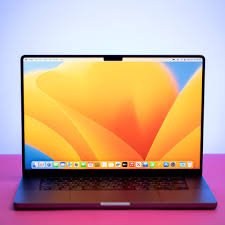
The new 14-inch and 16-inch MacBook Pros retain the same chassis as last year’s model, which still feels contemporary and robust. They offer a comprehensive selection of ports and significant power, making this decision perfectly acceptable. The design features sharp edges complemented by rounded corners, striking a balance between professional utility and Apple’s sleek aesthetic.
We evaluated the 14-inch model in silver and the 16-inch version in space gray (my personal favorite), though both colors are quite similar. Notably, this year’s models come with color-matched MagSafe power cables. Each device features Apple’s logo in a subtle tone-on-tone finish on the lid, maintaining an overall minimalist appearance.
Apple MacBook Pro (2024) Review: M2 Pro and M2 Max Flex
MacBook Pro (2024) Specifications
| Brand | Apple |
|---|---|
| Model Name | MacBook Pro |
| Screen Size | 16.2 Inches |
| Color | Silver |
| Hard Disk Size | 512 GB |
| CPU Model | Unknown |
| RAM Memory Installed Size | 16 GB |
| Operating System | Mac OS |
| Special Feature | Anti Glare Coating |
| Graphics Card Description | Integrated |
Apple MacBook Pro (2024) Review: M2 Pro and M2 Max Flex
Apple MacBook Pro (2024) Review: M2 Pro and M2 Max Flex
| Description | Price |
|---|---|
| Apple 2024 MacBook Pro Laptop with Apple M2 Pro | $1,869 |
| Apple 2024 MacBook Air 15-inch Laptop | $1,097 |
MacBook Pro Displays: Notch Considerations
Both the 14.2-inch and 16.2-inch Liquid Retina XDR displays on the latest MacBook Pros feature a notch at the top, reminiscent of the design seen on the iPhone 14 and 14 Plus (though the iPhone 14 Pro models have transitioned to a pill-shaped cutout). This notch accommodates a 1080p camera, a welcome upgrade for many users.
Having purchased a 14-inch MacBook Pro with the M1 Pro chip early last year, I’ve found that, unlike my iPhone, the notch has been hard to ignore. The same goes for this year’s MacBook Pros and the M2 MacBook Air. While the displays are slightly taller than the standard 16:10 aspect ratio—ensuring no loss of usable screen space compared to earlier models—the presence of the notch can still be bothersome.
If you’re similarly frustrated, there are software solutions available, such as TopNotch, which alters the menu bar to a black color, helping the notch to blend in more seamlessly. It’s worth noting that the cursor can still move beneath the notch, which some may find to be an oversight in the design.
The enhancements from last year’s redesign continue to impress. The MacBook Pro features full-sized function keys, Touch ID integrated into the power button, and a generous selection of ports, all of which contribute to a superior user experience.
Port Selection and Dimensions of the MacBook Pros
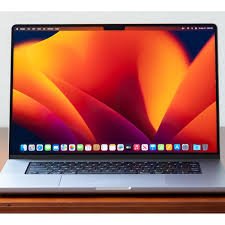
Both the 14-inch and 16-inch MacBook Pros come equipped with an identical array of ports. On the left side, you’ll find a MagSafe 3 charging port, two Thunderbolt 4 ports, and a 3.5 mm headphone jack. The right side features an SDXC memory card slot, a third Thunderbolt 4 port, and an HDMI port. Notably, the HDMI port has seen enhancements compared to previous models, supporting 4K at 240 Hz and 8K at 60 Hz, along with variable refresh rates. While we didn’t have access to a 4K 240 Hz monitor for testing (as they are quite rare), we’re eager to see its performance.
In terms of dimensions, the 14-inch MacBook Pro measures 12.31 x 8.71 x 0.61 inches and weighs 3.5 pounds. Meanwhile, the 16-inch model is slightly larger at 14.01 x 9.77 x 0.66 inches, weighing in at 4.8 pounds when equipped with the M2 Max. For comparison, the well-known Dell XPS 15 (9520) measures 13.56 x 9.06 x 0.73 inches and weighs 4.31 pounds.
Productivity Performance of the MacBook Pro (2024)
Apple’s M2 Pro and M2 Max chips deliver exceptional performance, making the MacBook Pro a formidable tool for productivity. We tested two configurations: a 14-inch MacBook Pro with the M2 Pro, 16GB of RAM, and a 1TB SSD, alongside a 16-inch model boasting a remarkable 96GB of unified memory and a 4TB SSD. Both units excelled in our evaluations.
The M2 Pro in the 14-inch model features a 12-core CPU, comprising eight performance cores and four efficiency cores. The M2 Max shares the same CPU architecture but is equipped with a more powerful GPU—a 19-core GPU for the Pro and a 38-core GPU for the Max. Additionally, both models incorporate a 16-core Neural Engine and specialized media engines designed for encoding and decoding H.264 and HEVC formats, as well as accelerating ProRes.
One of the standout improvements is the faster memory access. Apple claims that the M2 Pro offers 200 GB/s of memory bandwidth, while the M2 Max can reach up to 400 GB/s.
In practical use, both configurations easily surpassed my needs, which typically involve extensive web browsing for research, writing, and photo editing, often accompanied by music and social media applications running in the background. While I do enjoy some light gaming, I usually reserve intensive gaming sessions for my PC and consoles.
Performance Analysis of the MacBook Pro (2024)

In our Geekbench 5 tests, the laptop featuring the M2 Max achieved impressive results, scoring 1,993 in single-core performance and 15,173 in multi-core performance, with the M2 Pro trailing closely behind. These scores mark a notable improvement over the M1 Max we evaluated in 2021, as well as the Intel Core i7-12700H found in the Dell XPS 15 (9520). However, we still await performance data on Intel’s 13th Gen Core mobile processors.
For file transfer, the 14-inch MacBook Pro demonstrated excellent performance, copying 25GB of files at a speed of 1,917.69 MB/s, matching the previous generation’s 16-inch model. The M2 Max-powered 16-inch variant clocked in at 1,789.85 MB/s, just a second behind. It’s worth mentioning that some entry-level MacBook Pros have been reported to experience reduced SSD performance, potentially due to fewer NAND modules being used in their construction.
The 16-inch MacBook Pro with the M2 Max excelled in our Handbrake test, transcoding a 4K video to 1080p in 3 minutes and 59 seconds, outpacing the M2 Pro (4:06) and the previous M1 Max and Dell XPS 15 models.
In our first use of the Xcode Benchmark, both models produced similar results, with the 14-inch MacBook Pro with M2 Pro completing the task in 85 seconds and the 16-inch M2 Max finishing in 83 seconds.
To further evaluate performance, we conducted a stress test using Cinebench R23, running each laptop through 20 multi-core tests. Given their identical CPU cores, both models scored in the mid to high 14,700s. While there were some fluctuations in scores as the chips cooled, their overall performance remained consistent. Notably, the 14-inch MacBook Pro’s fans activated earlier and were noticeably louder compared to the 16-inch model, which remained relatively quiet until the eighteenth run.
During the stress test, we monitored CPU core temperatures using TG Pro. Although Apple does not provide specific clock speed information, Cinebench R23 suggests that the M2 Pro has a single-core clock speed of around 3.2 GHz, while the M2 Max is at approximately 3.4 GHz, with both chips reaching around 3.3 GHz for multi-core performance. The efficiency cores of the M2 Pro averaged 94.44 degrees Celsius, while the performance cores hit 99.02°C. For the M2 Max, the efficiency cores averaged 92.98°C, with performance cores at 97.62°C.
The M2 Max’s cooler performance may be attributed to the larger 16-inch chassis, which provides better heat dissipation and likely features a more effective cooling system.
Gaming and Graphics Performance on the MacBook Pro (2024)

The MacBook Pro’s M2 Pro features a 19-core GPU, while the M2 Max boasts an impressive 38-core GPU. These powerful graphics capabilities are ideal for creatives engaged in tasks like rendering, motion graphics, and illustration.
At Tom’s Hardware, we often emphasize gaming as a benchmark for graphical performance. Many new titles are designed using the Metal 3 API, which includes MetalFX Upscaling to enhance rendering speeds through advanced algorithms. This trend is especially evident among games on Apple Arcade, with Resident Evil Village being a notable example that supports Apple Silicon natively.
Eager to explore the M2 Max’s 38-core GPU and 96GB of unified memory, I played Resident Evil Village at a resolution of 3456 x 2160 with maximum graphics settings. The game generally ran between 50 and 60 frames per second, peaking at 60 fps in brighter scenes with less detail, and dipping in darker, more complex environments. When MetalFX upscaling was enabled in “quality mode,” the frame rate stabilized at a consistent 60 fps, using about 12.54GB of RAM out of the approximately 70GB available for the game.
Testing the M2 Pro’s 19-core GPU with 16GB of RAM, I opted for more moderate settings at 1080p with the “prioritize graphics” preset. During a dimly lit scene early in the game, the MacBook with the M2 Pro achieved around 80 fps. In contrast, in brighter scenes showcasing the village and surrounding areas, it maintained between 60 and 70 fps. With MetalFX scaling applied, the frame rate often rose to the high 70s or even 80 fps.
For a different approach, I set the resolution to 2560 x 1440 and continued with the “prioritize graphics” preset, managing to surpass 100 fps without even utilizing MetalFX upscaling.
While Apple Silicon shows great potential for gaming, more developer support is essential for expanding the library of games optimized for this platform. Increased native game development on Metal would be beneficial, but Apple will need to strengthen its relations with developers to encourage this shift.
That said, the new Macs can still run games through the Rosetta translation layer. In the older Rise of the Tomb Raider, the M2 Pro reached 49 fps at a resolution of 1920 x 1200, while the M2 Max achieved 92 fps at the same settings. Impressively, the M2 Max also managed a respectable 32 fps at 3456 x 2234.
Display Quality on the MacBook Pro (2024)

Both the 14-inch and 16-inch MacBook Pros feature stunning displays. Dubbed “Liquid Retina XDR” by Apple, these screens utilize high-resolution mini-LED technology, offering HDR support and adaptive refresh rates of up to 120 Hz via ProMotion.
The 14.2-inch model has a resolution of 3024 x 1964, while the 16-inch version features a 3456 x 2234 display. Either way, watching the first episode of The Last of Us on HBO Max was a visual treat. In one scene, where Joel and Tess navigate a dark building with flashlights, the interplay of light and shadow effectively heightened the atmosphere, vividly illuminating a horrific infected figure without sacrificing visibility.
Display Performance on the MacBook Pro (2024)
Our colorimeter tests revealed that the displays on both the 14-inch and 16-inch MacBook Pros are quite similar when it comes to SDR content. Each model covers 118% of the sRGB color gamut and over 83% of the DCI-P3 gamut, achieving brightness levels around 450 nits. These color performance metrics surpass those of the previous generation 16-inch MacBook Pro, although there appears to be a slight trade-off in brightness—though I encountered no significant issues during use.
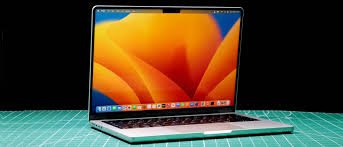
While some PC manufacturers have transitioned to OLED displays, Apple has yet to adopt this technology in its Macs. For comparison, the Dell XPS 15 features an OLED touchscreen that slightly outperforms in color gamut coverage, though it lacks the brightness of Apple’s displays (the 14-inch MacBook Pro reaches 450 nits, while the 16-inch model hits 447 nits).
In HDR content, both MacBook Pros demonstrate impressive capabilities. The 14-inch model achieves a peak brightness of 1,491 nits with 40% coverage, while the 16-inch variant reaches 1,470 nits.
Apple’s True Tone feature is enabled by default, automatically adjusting the display based on ambient lighting conditions—great for general use like movie watching or web browsing. However, if you’re engaged in photo editing, graphic design, or video production, you might prefer to disable it for the most accurate color representation.
Keyboard and Touchpad on the MacBook Pro (2024)
The MacBook Pro’s keyboard features reliable scissor switches, and both the 14-inch and 16-inch models offer the same layout. The backlit keys, set in a sleek black well, enhance the overall aesthetic. The inclusion of full-sized function keys is a welcome change from the smaller keys found on previous Intel-based models or the Touch Bar.
Typing and Trackpad Performance on the MacBook Pro (2024)
During a Monkeytype typing test, I achieved a speed of 120 words per minute on the 16-inch MacBook Pro’s keyboard, maintaining a standard error rate of just 2%.
Apple continues to lead the market with its exceptional trackpads. The 14-inch model features a Force Touch trackpad measuring 5.1 x 3.2 inches, while the 16-inch version boasts a spacious 6.3 x 3.9 inches. Both trackpads utilize haptic feedback, allowing users to click anywhere on the surface, and provide ample space for macOS gestures, including those requiring three fingers.
Audio Quality on the MacBook Pro (2024)

The 16-inch MacBook Pro is equipped with my favorite speakers among laptops, especially for non-gaming audio. Both the 14-inch and 16-inch models feature a six-speaker sound system, but the 16-inch variant offers slightly more detail.
Both models deliver powerful sound, capable of filling a room effortlessly. For instance, Fall Out Boy’s “Love From The Other Side” played beautifully on the 16-inch Pro, with well-balanced guitars, vocals, drums, and bass. The audio is excellent on the 14-inch model as well; however, I noticed the 14-inch didn’t reach quite the same volume, and the bass and drums were marginally better on the larger model.
Both laptops also support Apple’s spatial audio for compatible apps and offer Dolby Atmos for select movies and TV shows. Additionally, spatial audio can be enjoyed through AirPods, and Apple states that the 3.5 mm headphone jack provides “advanced support for high-impedance headphones.”
Upgradeability of the MacBook Pro (2024)
Despite the eight pentalobe screws securing the MacBook Pro’s chassis, don’t expect to upgrade its internals. Pentalobe screws are not particularly common, and more critically, the RAM is integrated into the M2 Pro and M2 Max chips, while the SSD is soldered directly to the motherboard. Therefore, it’s essential to configure your laptop with the memory and storage you’ll need for the long term.
As of now, some user manuals for the new MacBook Pros can be found on Apple’s website, along with Self Service repair information; however, comprehensive repair manuals are not yet available. Teardowns have indicated some internal changes, particularly regarding the cooler and the layout of the RAM and SSD on the motherboard.
Battery Life on the MacBook Pro (2024)

Apple frequently highlights the efficiency of its systems, and the 14-inch and 16-inch MacBook Pros certainly lived up to this reputation in our battery tests. Both models demonstrated impressive longevity while continuously browsing the web, running OpenGL tests, and streaming video—all connected to Wi-Fi and with the display set to 150 nits brightness.
The 16-inch MacBook Pro, equipped with a 100 WHr battery, delivered an impressive runtime of 18 hours and 56 minutes—an increase of over three hours compared to the 2021 model. The 14-inch version, featuring a 70 WHr battery, lasted for 14 hours and 21 minutes. In comparison, the Dell XPS 15 managed 9 hours and 43 minutes, likely due to the energy demands of its OLED display.
Heat Management on the MacBook Pro (2024)
To assess the thermal performance of the MacBook Pro, we conducted a heat test while running Cinebench R23 to simulate a demanding multi-core workload.
On the 14-inch model, the center of the keyboard reached 45.8 degrees Celsius (114.4 degrees Fahrenheit), while the trackpad remained cooler at 30.9 C (87.62 F). The 16-inch variant recorded a keyboard temperature of 43.1 C (109.58 F), with the touchpad hitting 29.9 C (85.82 F). Overall, the 16-inch model maintained lower temperatures at common touchpoints, but neither device felt uncomfortable to use during testing.
The highest temperature recorded on the bottom of the 14-inch MacBook was 41.7 degrees Celsius (107.06 degrees Fahrenheit), whereas the 16-inch model reached 43.7 degrees Celsius (110.66 degrees Fahrenheit). This contrasts with the cooler temperatures noted on the keyboard and touchpad.
Apple MacBook Pro (2024) Review: M2 Pro and M2 Max Flex
MacBook Pro (2024) Specifications
| Brand | Apple |
|---|---|
| Model Name | MacBook Pro |
| Screen Size | 16.2 Inches |
| Color | Silver |
| Hard Disk Size | 512 GB |
| CPU Model | Unknown |
| RAM Memory Installed Size | 16 GB |
| Operating System | Mac OS |
| Special Feature | Anti Glare Coating |
| Graphics Card Description | Integrated |
Apple MacBook Pro (2024) Review: M2 Pro and M2 Max Flex
Apple MacBook Pro (2024) Review: M2 Pro and M2 Max Flex
| Description | Price |
|---|---|
| Apple 2024 MacBook Pro Laptop with Apple M2 Pro | $1,869 |
| Apple 2024 MacBook Air 15-inch Laptop | $1,097 |
Webcam Performance on the MacBook Pro (2024)
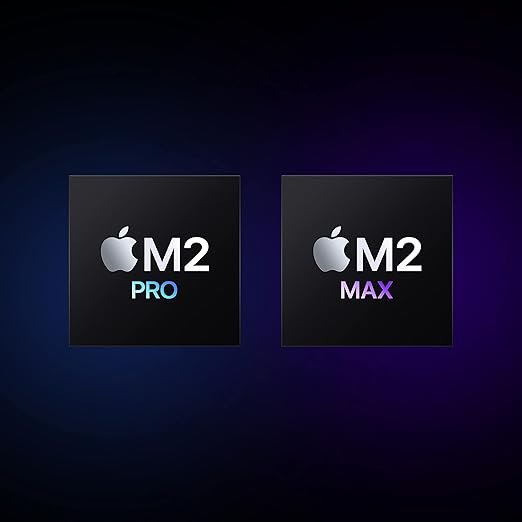
The FaceTime HD camera on the MacBook Pro remains largely unchanged since its 2021 redesign, and that’s a positive aspect. This 1080p webcam delivers accurate colors and impressive detail. Even under difficult lighting conditions, it effectively captured the vibrant blue of my sweater while distinguishing it from the color of my eyes. The camera also showcased fine details in my hair and skin tone. Positioned near a window, I found that the lighting didn’t overpower the image, resulting in a clear and well-balanced picture.
The FaceTime HD camera on the MacBook Pro has seen minimal changes since its 2021 redesign, which is a positive aspect. This 1080p webcam delivers accurate colors and impressive detail, effectively capturing my royal blue sweater and distinguishing it from the color of my eyes, even in challenging lighting. I was positioned by a window, and the camera managed to maintain clarity without blowing out the image.
Apple’s Neural Engine in the M2 Max and M2 Pro enhances webcam performance using “computational video” techniques to reduce noise in images. While it doesn’t match the advanced capabilities of some iPhone photography, the results still look natural.
However, I still wish the notch housing the camera also supported Face ID. Integrating the facial recognition technology from the iPhone into a laptop lid would be a challenge, but many Windows competitors offer facial recognition with IR cameras. While Touch ID is reliable, the presence of the notch highlights the absence of Face ID.
For those seeking even better webcam quality, macOS Ventura allows you to connect your iPhone as a webcam through a feature called Continuity Camera. This option may be more relevant for older Intel or M1-based MacBook models lacking 1080p webcams.
macOS Ventura and Features
The new MacBook Pros come pre-installed with macOS Ventura (version 13), which debuted in fall 2022. Key features include much-anticipated updates in Mail, such as the ability to undo and schedule sends; enhanced image search in Spotlight; and Passkeys for secure sign-ins. Other improvements include editable iMessages, Stage Manager for window organization, and the Continuity Camera feature.
Unlike Windows, macOS is free from unnecessary bloat. It includes essential applications like Mail, Messages (great for syncing with iPhones and iPads), Notes, Maps, FaceTime, and Safari. Additionally, Apple offers dedicated apps for services like Apple Music, Apple TV, Apple News, and Podcasts, as well as free productivity apps like Numbers, Pages, and Keynote.
Rosetta 2 remains available to run Intel x86 applications on Apple Silicon, but a growing number of programs are now native to M-series chips or utilize universal binaries. Some games, including Resident Evil Village and Minecraft, have native support for Apple Silicon, leveraging the Metal API.
MacBook Pro 2024 Configurations and Warranty
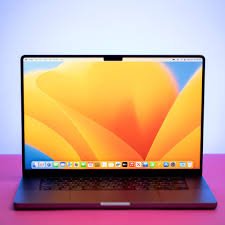
For this review, we evaluated two configurations: a 14-inch MacBook Pro with an M2 Pro (12-core CPU, 19-core GPU), 16GB of RAM, and a 1TB SSD priced at $2,499; and a 16-inch MacBook Pro featuring an M2 Max (12-core CPU, 38-core GPU), 96GB of RAM, and a 4TB SSD, retailing for $5,299.
The base model of the 14-inch MacBook Pro starts with a scaled-down M2 Pro (10-core CPU, 16-core GPU), 16GB of RAM, 512GB SSD, and a 67-watt USB-C charger for $1,999. The entry-level M2 Max version includes a 12-core CPU, 30-core GPU, 32GB of RAM, and a 1TB SSD for $3,099.
The 16-inch MacBook Pro starts at $2,499 with an M2 Pro (12-core CPU, 19-core GPU), 16GB of RAM, and a 512GB SSD. The reviewed model is nearly maxed out unless you opt for the 8TB SSD upgrade, which pushes the price to $6,499.
The costs for upgrading RAM and storage are substantial. For example, upgrading the base 14-inch MacBook Pro from 16GB to 32GB of RAM costs $400. With the M2 Max, moving from 32GB to 64GB is also $400, while upgrading to 96GB like in our review unit will set you back $800. Upgrading storage from 512GB to 1TB is $200, with a $400 increase for 2TB, and an eye-watering $2,400 for 8TB.
Apple offers a one-year warranty on its MacBook Pros, with optional AppleCare Plus available at $99.99 annually for the 14-inch model or $279 for three years. Coverage for the 16-inch model costs $149.99 annually or $399 for three years.
Apple MacBook Pro (2024) Review: M2 Pro and M2 Max Flex
MacBook Pro (2024) Specifications
| Brand | Apple |
|---|---|
| Model Name | MacBook Pro |
| Screen Size | 16.2 Inches |
| Color | Silver |
| Hard Disk Size | 512 GB |
| CPU Model | Unknown |
| RAM Memory Installed Size | 16 GB |
| Operating System | Mac OS |
| Special Feature | Anti Glare Coating |
| Graphics Card Description | Integrated |
Apple MacBook Pro (2024) Review: M2 Pro and M2 Max Flex
Apple MacBook Pro (2024) Review: M2 Pro and M2 Max Flex
| Description | Price |
|---|---|
| Apple 2024 MacBook Pro Laptop with Apple M2 Pro | $1,869 |
| Apple 2024 MacBook Air 15-inch Laptop | $1,097 |
Bottom Line
The 14-inch and 16-inch MacBook Pros may not represent a dramatic shift from the previous generation, but that’s not necessarily a drawback. The design still feels modern, the displays (while not OLED) are impressive, the speakers are outstanding, and performance along with battery life is excellent.
For most users, the M2 Pro will likely suffice, but for those engaged in intensive graphics work, the M2 Max’s additional GPU cores and increased memory bandwidth could be worth considering.

